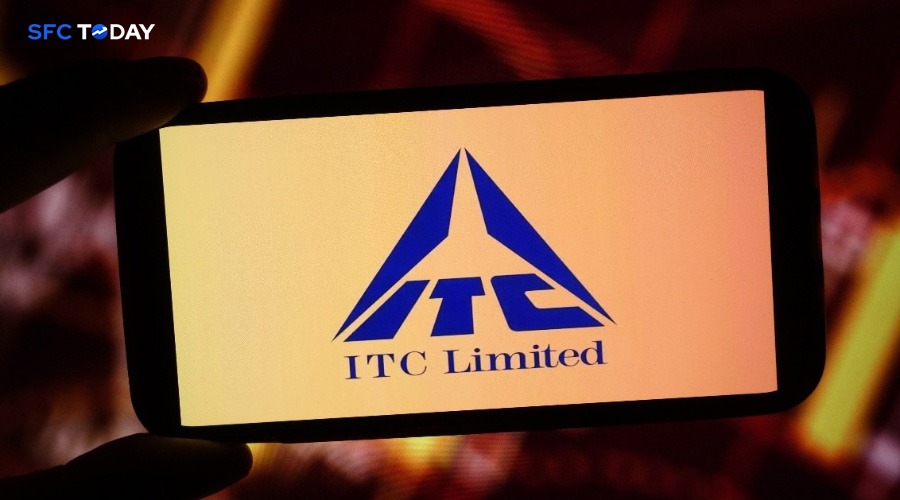A ₹14.35 dividend sweetens the deal as the company eyes future expansion and rural growth
ITC Limited, one of India’s leading conglomerates, has posted strong results for the fourth quarter of the financial year 2025. Despite various economic challenges such as inflation and competitive pressure, the company reported impressive growth in profits and revenue across multiple segments. The performance signals steady progress and raises key questions about what lies ahead for ITC.
Q4 FY25 Performance Highlights
ITC reported a consolidated net profit of ₹19,727 crore for Q4 FY25. This figure includes a one-time exceptional gain of ₹15,145 crore, which came from the demerger of its hotel business. Excluding this extraordinary item, the net profit from continuing operations stood at ₹5,155 crore, marking a 3% year-on-year growth.
The revenue from operations increased by 10% year-on-year, reaching ₹20,376 crore. The growth was mainly driven by a strong performance in its cigarette and agri-business divisions, which continue to be core revenue-generating areas for the company.
Detailed Segment-Wise Performance
Cigarettes Segment
Cigarettes remain the backbone of ITC’s operations. In Q4 FY25, revenue from this segment rose to ₹9,229 crore, compared to ₹8,689 crore in the same quarter last year. The profit from cigarettes also increased from ₹5,158 crore to ₹5,403 crore, reflecting a 4% year-on-year growth.
The cigarette business continues to benefit from stable taxation policies and effective distribution strategies. ITC has been maintaining its leadership position in the segment while also focusing on improving product quality and packaging to enhance customer loyalty.
FMCG – Others Segment
The FMCG – Others segment, which includes packaged foods, personal care, and lifestyle products, reported revenue of ₹5,503 crore, slightly higher than ₹5,308 crore in Q4 FY24. However, profit from this segment dropped to ₹346 crore from ₹480 crore. The fall in profit is mainly due to increased marketing and promotional spending, as well as continued inflationary pressure on raw material costs.
Despite the dip in profits, this segment remains a key area of investment for ITC. The company is working to build strong brands and expand its distribution network, especially in rural areas and emerging urban centers.
Agri Business
The agri business segment posted a solid performance with revenue increasing to ₹3,695 crore, up from ₹3,136 crore in the previous year. The segment profit rose from ₹187 crore to ₹253 crore, driven by strong rural demand and favorable monsoon conditions that improved crop yields.
ITC’s deep rural network and strong sourcing capabilities have enabled the company to respond quickly to changes in the agricultural landscape. This segment is also increasingly aligned with ITC’s sustainability goals, promoting environmentally responsible farming practices.
Paperboards, Paper & Packaging
This segment recorded revenue of ₹2,189 crore, up from ₹2,073 crore a year ago. However, segment profit fell to ₹202 crore from ₹293 crore. The drop in profitability is attributed to lower product realizations and higher wood costs, which increased input expenses.
ITC is investing in improving efficiency in this segment and exploring opportunities in sustainable packaging solutions, especially given rising consumer interest in eco-friendly alternatives.
Dividend Announcement
ITC has declared a final dividend of ₹7.85 per share for the financial year 2025. Combined with the interim dividend of ₹6.50 per share announced earlier, the total dividend for FY25 stands at ₹14.35 per share. This dividend payout reflects the company’s commitment to rewarding its shareholders while maintaining a strong balance sheet.
Stock Market Reaction
Following the announcement of its Q4 results, ITC’s stock price rose by 1.9%, reaching a daily high of ₹433.95 on the Bombay Stock Exchange. This uptick shows that investors responded positively to the company’s performance, especially considering the strong core profits despite challenges in some segments.
Future Outlook for ITC
Looking ahead, ITC expects a gradual improvement in consumer spending, particularly in rural areas. A combination of factors such as moderating inflation, increased government support programs, and steady agricultural performance is likely to drive this recovery.
The company plans to strengthen its core business areas while also exploring new growth opportunities in health and nutrition, digital platforms, and sustainable products. Specific focus areas for the future include:
Expanding the FMCG portfolio, with more products in health foods, personal care, and home essentials.
Digital transformation, including the use of data analytics to better understand consumer behavior.
Sustainability initiatives, such as reducing plastic usage, promoting renewable energy, and water conservation.
Growth in exports, particularly in agri-products and value-added food categories.
The company is also focused on building future-ready infrastructure, expanding rural reach, and increasing automation to manage costs better and improve efficiency.
Challenges Ahead
While the outlook is generally positive, ITC will need to manage several key challenges:
Rising input costs, especially for its FMCG and paper segments, could pressure margins.
Regulatory risks in the cigarette business remain, especially around taxation and packaging laws.
Consumer behavior is shifting quickly, with more focus on health, wellness, and digital convenience, which may require faster innovation cycles.
Global economic uncertainties, including potential disruptions in export markets and raw material availability, can also impact business continuity.
ITC’s fourth-quarter results for FY25 confirm the company’s ability to maintain stable performance across its diversified portfolio. The strong showing in the cigarettes and agri-business segments, combined with strategic investments in FMCG and sustainability, highlights a balanced approach to growth.
With a healthy cash flow, strong dividend payout, and forward-looking business plans, ITC is well-positioned to face future challenges and capitalize on new opportunities. Continued focus on innovation, rural expansion, and cost efficiency will play a critical role in driving the company’s growth trajectory in the years ahead.


